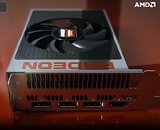Thursday, June 18th 2015

AMD "Fiji" Silicon Lacks HDMI 2.0 Support
It turns out that AMD's new "Fiji" silicon lacks HDMI 2.0 support, after all. Commenting on OCUK Forums, an AMD representative confirmed that the chip lacks support for the connector standard, implying that it's limited to HDMI 1.4a. HDMI 2.0 offers sufficient bandwidth for 4K Ultra HD resolution at 60 Hz. While the chip's other connectivity option, DisplayPort 1.2a supports 4K at 60 Hz - as do every 4K Ultra HD monitor ever launched - the lack of HDMI 2.0 support hurts the chip's living room ambitions, particularly with products such as the Radeon R9 Nano, which AMD CEO Lisa Su, stated that is being designed for the living room. You wouldn't need a GPU this powerful for 1080p TVs (a GTX 960 or R9 270X ITX card will do just fine), and if it's being designed for 4K UHD TVs, then its HDMI interface will cap visuals at a console-rivaling 30 Hz.
Source:
OCUK Forums

139 Comments on AMD "Fiji" Silicon Lacks HDMI 2.0 Support
Claiming "compatibility" with a backwards compatible port like HDMI 2.0 is misleading in both of these products. It's like saying a PS3 is "HDMI 2.0 compatible" just because it will display a 1080p image on your new 4K TV.
A cable actually capible of this feat would likely cost $100+ and require external power all while introducing lag.
from what your saying it would cost you 100 bucks to do it but there wont be lag just not full color.
I am interested why it doesn't have HDMI 2.0 but they probably tried to extort some additional money over HDMI 2.0 and they stayed with HDMI 1.4.
All this fuss about some stupid thing over "it doesn't support a connector which is 4 years to late and you have to pay annual fee plus a royalty rate per unit."
Die HDMI!!!
The $100 adapter scenario would likely pull it off full-featured, but would be laggy due to the interruption in signal. This sort of thing has been happening with Dual-Link DVI adapters for years.
amd has failed once again....
Only card that is really gimped because of it is R9 Nano really. It's a HTPC type of card and without HDMI 2.0 support, it kinda loses it's huge selling point...
I hope they get it together, compromise is the last thing they need in the current market. Lack of competition hurts the consumers in the long run.
Cant even believe I wasted time typing out to obvious as everyone here knows thats a non-argument troll comment.
The wound is still too fresh and it hurts every time he uses the pc.
SO maybe there is 0.0000000001 % of the market that will feel let down.
Sure, if you're planning to hold onto the card for 5 years and want to use a TV it could be a problem, but these cards will be obsolete in 12 months when 14/16 nm cards arrive anyway, and most people will have to buy a new 4K TV to support HDMI 2.0 anyway
If you're buying 4K TVs and $500-$600 graphics cards I'm sure you can afford an upgrade next year.
Buy a TV with display port then like this Panasonic TC-L65WT600 has...
Hehe.
@buggalugs its not the cores being 28nm that could make them obsolete but dx12.1.. games and apps will certainly still be able to use 12.0 tho if not 11.0 or 11.1 by then.
-you cannot play a decent video game (not those crappy indie games) at 4K resolution and at 60 FPS
-if you need 4K resolution for viewing and editing text or images because 1080p does not look smooth enough, 30 Hz is enough
Edit: You will not get a decent minimal 30 FPS when playing at 4K